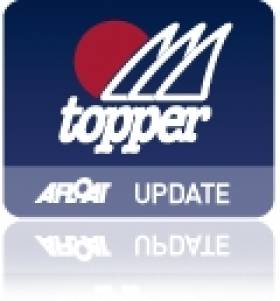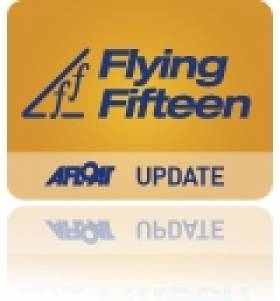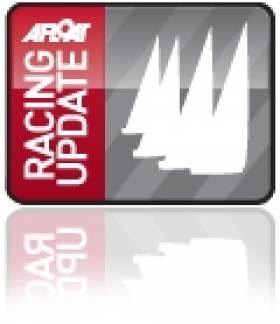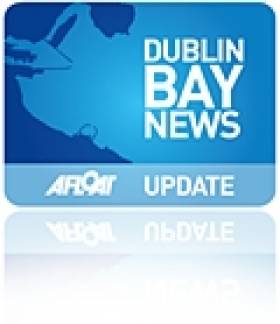Displaying items by tag: National YC
Lynch Adds Leinster Title
Blessington's Finn Lynch added the Topper Leinster title to his 2010 roll of honour when he emerged as winner of the 50-boat event at the National Yacht Club in Dun Laoghaire today. The Carlow based teenager was the winner of the British Topper Championships sailed at Abersoch in August.
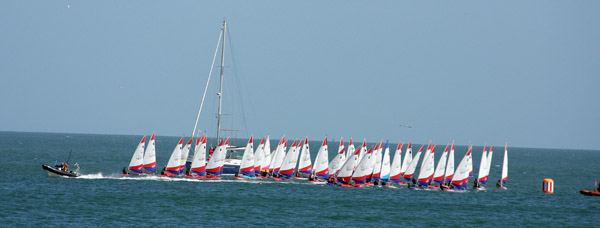
The start of the second race today in Scotsman's Bay
Big ISORA Fleet Gathers for M2 Buoy Race
- Dinah
- Dublin Bay
- Just Enough
- Lula Belle
- ISORA
- National YC
- irish sea
- English Mick
- Quite Correct
- Galileo
- African Challenge
- Lancastrian
- Tsunami
- Rebellion
- Orna
- Madam Wen
- Rollercoaster
- Raging Bull
- Miss Scarlett
- Team Windmill
- First of September
- Finnigans Wake
- Windshift
- Mojito
- Adelie
- Gwawr
- Yahtzee
- Legally Blonde
- Katanca
- Oystercatcher
- Obsession
- Sarnia
'Lack of Interest' Forces Cancellation of Pwhelli Race
Ben Mulligan has been relected as Flying fifteen President for another term at the recent annual general meeting of the class. Colin Dougan. A number of new fixtures were proposed for the 2011 season including Larne, County Antrim YC (Whitehead), Cushendall and the National YC. Dun Laoghaire's NYC made no secret of the fact it would like to host the class national championships, a reasonable ambition given it holds the biggest fleet in the country (20 or more boats). As the Worlds are in July next year at Hayling Island SC in the UK it was again agreed to have only four events next season. It was also agreed that the venues for 2011 would be agreed at a committee meeting in Carlingford in September.
Murphy Wins Radial 'Connaughts' on Dublin Bay
A strong entry of 112 including Chile's Matias Del Solar, currently ranked seventh in the world, competed for the Connaught Laser championships this weekend on Dublin Bay. Hosted by the National YC under international race officer Con Murphy, the three Saturday races were sailed in a 10-15kt shifty westerly. Sunday saw alight breeze swing from NW to SW and then back around to North andeventually an Easterly, resulting in several postponments andultimately 2 of the planned 3 races being sailed. The Radial fleet hadthe largest fleet of 48 boats and was won Annalise Murphy from thehost club with Christopher Eames from Strangford in second. Thestandard fleet was duly won by Matias Del Solar from James Espey ofBallyholme and the 4.7s were won by Howth's Diana Kissane from fellowclub sailor Cillian Mc Creer. A number of the competitors includingDel Solar, Espey and Murphy are now enroute to Weymouth for next weeks Olympic Sail for Gold regatta where similar conditions to Dublin Baycan be expected.Full results attached:-
A strong entry of 112 including Chile's Matias Del Solar, currently ranked 7th in the world, competed for the Connaught Laser championships over the August holiday weekend on Dublin Bay.
Hosted by the National YC under international race officer Con Murphy, the 3 saturday races were sailed in a 10-15kt shifty westerly. Sunday saw a light breeze swing from NW to SW and then back around to North and eventually an Easterly, resulting in several postponments and ultimately 2 of the planned 3 races being sailed.
The Radial fleet had the largest fleet of 48 boats and was won Annalise Murphy from the host club with Christopher Eames from Strangford in second. The standard fleet was duly won by Matias Del Solar from James Espey of Ballyholme and the 4.7s were won by Howth's Diana Kissane from fellow club sailor Cillian Mc Creer.
A number of the competitors including Del Solar, Espey and Murphy are now enroute to Weymouth for next weeks Olympic Sail for Gold regatta where similar conditions to Dublin Bay can be expected.
Minister for Sport Goes Sailing
Minister for Sport and local TD Mary Hanafin made good on a long-standing promise to go sailing when she joined 'Wow' (Women on the Water) scheme that held a one-day event at the National Yacht Club in Dún Laoghaire, yesterday.
Beginners and experienced women sailors joined the initiative sailed in the Irish Sailing Association's fleet of J80 Sportsboats. Former Olympian Cathy MacAleavey, who organised the day, steered the Minister's yacht called Dun Laoghaire Marina. Photos by Michael Chester are below:
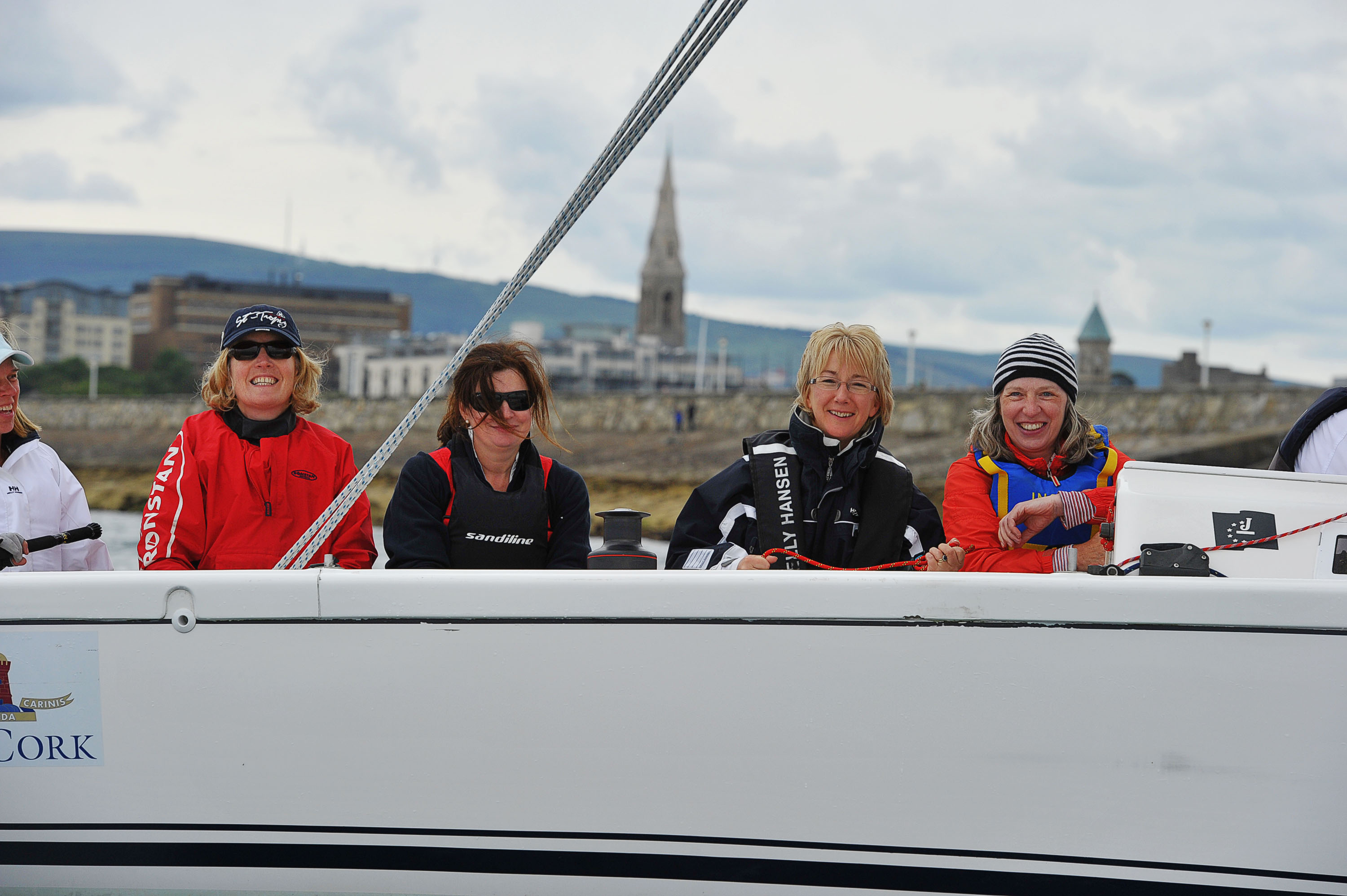
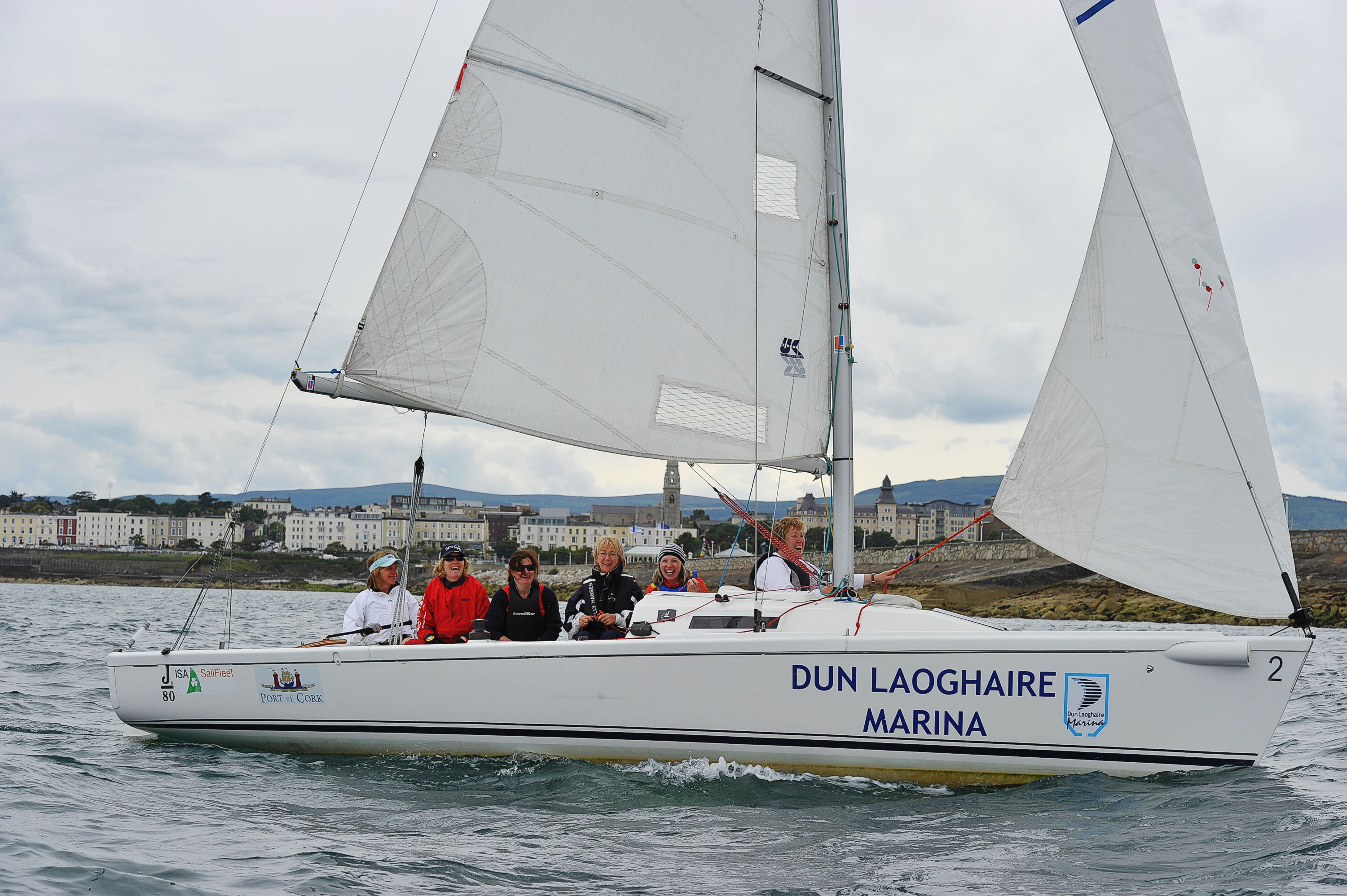
Report on Race 4 – Pwllheli – Causeway - Bardsey – India Nt - Wicklow – 5th June 2010.
From an entry list of 28 sailing boats, 14 boats came to the line in Pwllheli for the 4th ISORA race – 75 miles to Wicklow. Due to tidal difficulties the race start time was brought forward to 07.15. The weather forecast was for light winds increasing to Force 3 or 4 and veering North West. However a reasonable wind of 8kts in Pwllheli, early in the morning convinced the Race Organiser to hold the planned course to Wicklow. The wind held well for the beat to Causeway and for the tight spinnaker reach towards Bardsey. “ Galileo” was first around Causeway followed by “Tsunami”.
As the fleet approached Bardsey the wind dropped to virtually nothing. “Tsunami” had just enough wind to creep around Bardsey first while the remainder of the fleet wrestled with the possibility of the tide pushing them through the sound and around the wrong side of Bardsey.The wind picked up from the West for “Tsunami” after the rounding Bardsey and a fast passage to Wicklow was expected. This was not to be as the wind died again and a heavy sea mist appeared. There was little or no wind for 3-4 hours. When eventually the mist lifted and the westerly wind appeared again, only four boats were visible – “Tsunami”, “Raging Bull”, “Just Enough” and “Lula Belle”.
The four boats continued across the Irish Sea, within sight of each other, with the wind shifting all the time and disappearing at times. At approximately 02.30 on Sunday morning “Raging Bull” rounded Nt India followed by “Tsunami” and “Just Enough”. “Lula Belle” could not be seen. The wind picked up again and soon there was 14kts of wind from the North West and the boats roared towards the Wicklow finish.
The wind had not finished playing its tricks. The usual “Wicklow Hole” had formed within one mile of the finish line and the boats ground to a halt as they arrived there. Very tricky sailing was required to manoeuvre in the light winds and the then strong south going tide to the finish.The first boat to cross the finish line was “Raging Bull” at 04:01, who only managed to take 2nd Overall and 1st in Class 1. It was followed closely by “Tsunami” who took 2nd in Class 1 and 3rd Overall. “Just Enough” appeared over the finish line at 04:28 to take the Overall Win and Class 2. “Lula Belle” continued to battle the fluky conditions and finished at 12:25 to take 4th Overall and 2nd Class 2.
There were no other finishers.
The next race is next weekend 13th June, a Sunday Day Race from Dun Laoghaire. It is hoped that some new boats will use this race as a “taster” for ISORA. An Après Sail get together is arranged in the NYC after the race.
Results and Entry form race five is attached.
Raging Bull Wins Blustery ISORA Race
Matt Davis sailing Raging Bull (a Sigma 400) took first place overall in the second race of the ISORA series sailed in blustery conditions on Saturday. ISORA newcomer Ken Grant and “Tigh Soluis” took second overall and first in Class two. “Galileo” took third Overall and second in Class 1. “Tsunami” took third in Class one while “Legally Blonde” took second Class two and “Lula Belle” took third in class two.
From an entry list of 26 boats, 20 boats came to the line in Dun Laoghaire for the 2nd ISORA race and the first in conjunction with the Royal Alfred Yacht Club and their Lee Overlay Offshore Series. The fleet had two newcomers to ISORA- “Rollercoaster” and “Tigh Solus”.
The wind remained constant for the entire race North- East, 20-25 knots. The tide also was ideal with a south going tide for the leg to Arklow North, turning as the fleet rounded to go north to Dun Laoghaire. The wind and tide gave a fast invigorating race. Even the sun shone. It was perfect offshore conditions.
With a beam reach to the Muglins and a reach down to North Arklow the fleet kept very tight. There was even crowding for some boats rounding North Arklow. The close proximity of the boats kept all the crew driving their boats for the duration of the race.
The leg to the Muglins, before turning into Dublin Bay for the finish at the Harbour lighthouses, was a long leg- short leg beat. Due to the north-easterly that had been blowing for some days the seas were rough and extreme care had to be taken to steer the boats around the breakers.
The first boat to cross the finish line was “Galileo”, Tennyson, Lemass and Kelliher. It was followed closely by Matt Davis’s fast Sigma 400 “Raging Bull” with “Tsunami”, Vincent Farrell close behind. The entire fleet finished the 50 mile course within two hours of “Galileo”.
The next race is next weekend 15th May from Holyhead to Dun Laoghaire. It is a 75 mile race. This is also the feeder race to the ICRA Championships being run in the Royal St. George Yacht Club. Results attached.
Breezy Start Forecast for ISORA Race to Arklow
ISORA has released the 25–boat entry list for what's forecast to be a breezy start to tomorrow's second ISORA race from Dun Laoghaire to Arklow and back. Any boats visiting Dun Laoghaire are welcome to use the facilities of the National YC, says ISORA and NYC Commodore Peter Ryan. The race briefing will be held at Dun Laoghaire marina tomorrow morning at 0845.
Katanca Stays on Top in ISORA
A change in the finishing time of the winning sailing yacht in the first race of the 2010 ISORA series has led to a reissue tonight of Saturday's race results but the placings still stand. Double-handed entry, Katanca, an Elan 31 sailed by Barry O'Connor and Paul O'Riain from the Royal Irish YC stay on top in the 20-boat fleet. The revised results are attached.


























